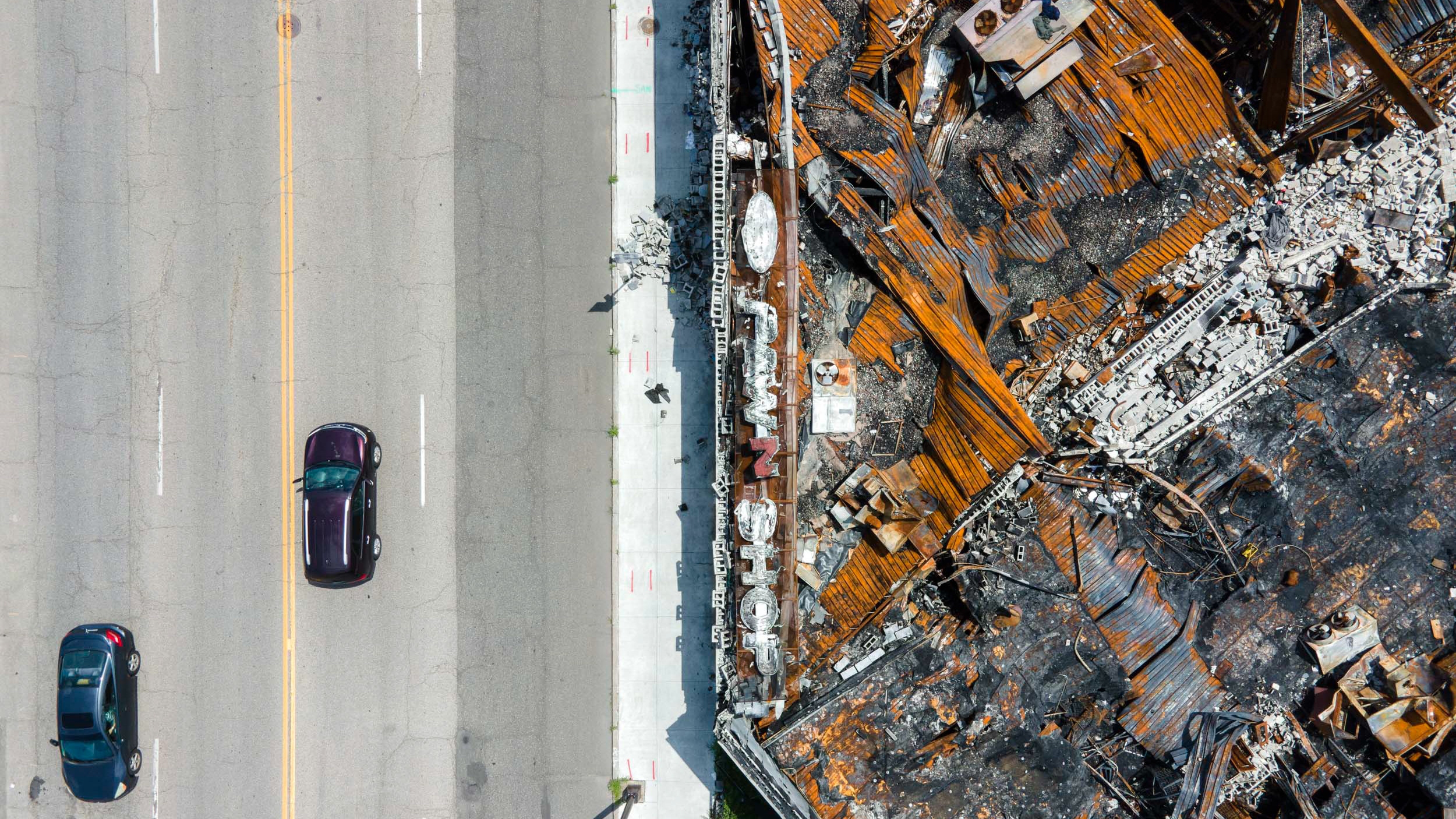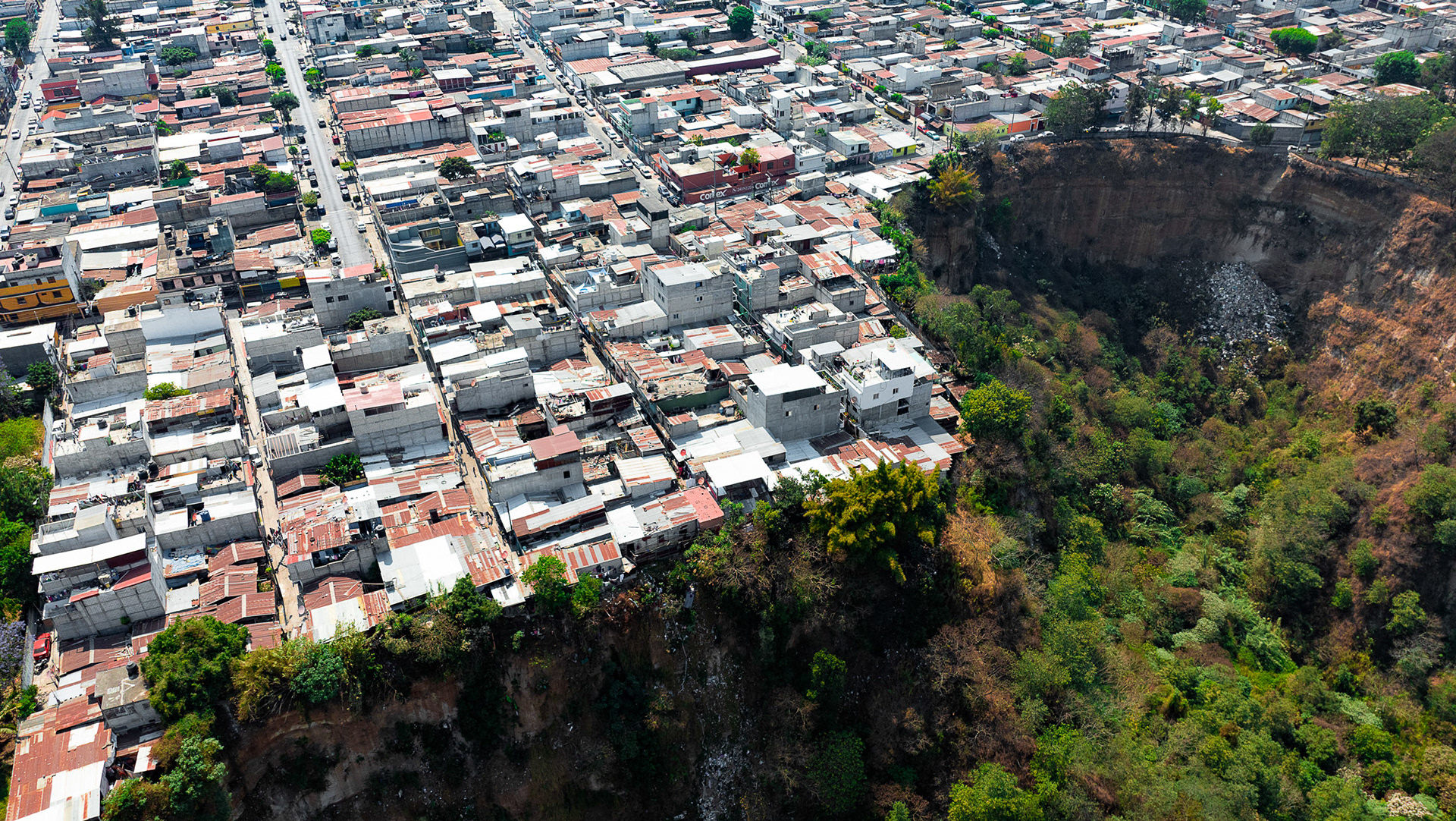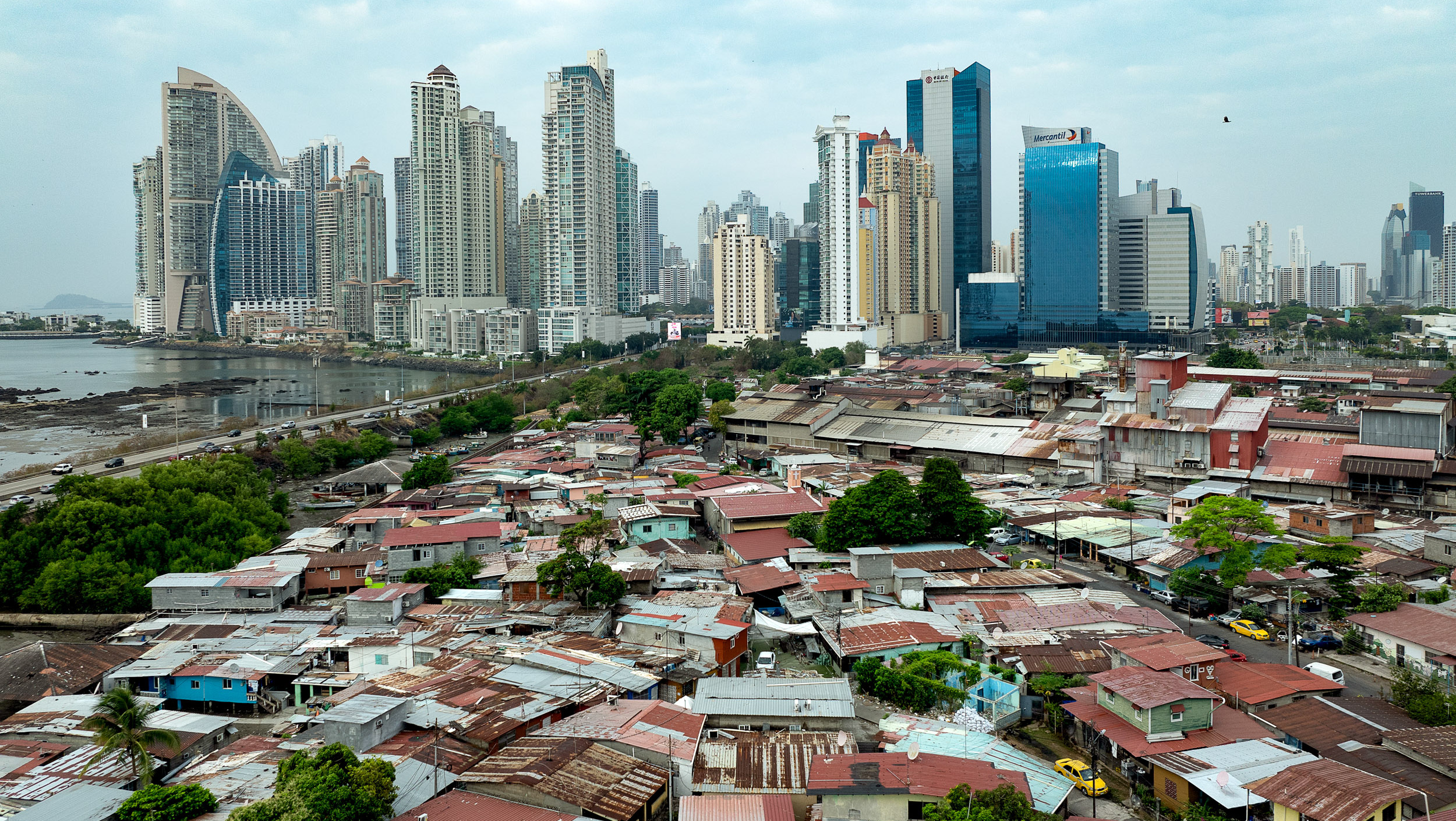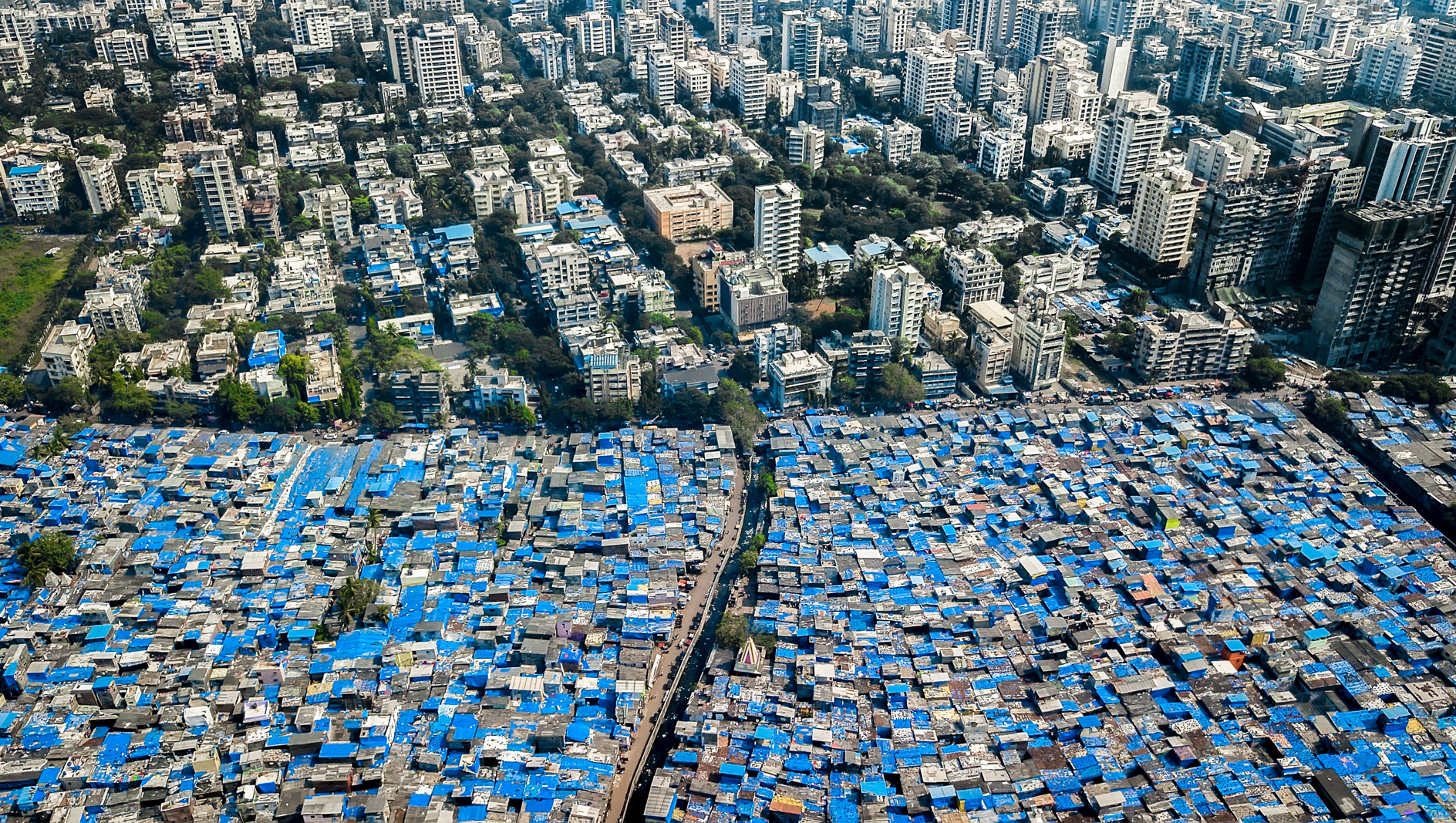The "Wall of Shame" in Lima separating rich and poor, near the community of San Juan de Miraflores.
Lima's suburbs are growing at such a rapid pace that they threaten archealogical sites like this one near Julio Cesar Tello. The pressures of migration, housing, and jobs can seem much bigger than the need to preserve history, even at the expense of losing it forever. The future of the urban space surrounding Lima is unwritten.
Wealthy suburbs carved into hillsides dot the area of La Molina, in Lima's east, part of a new "high-income axis" extending from the historic center to the highlands.
Enedina Conspiciona Avilez Soto (67) surveys the cement factory across the valley from near her home, in Villa Maria del Triunfo, Lima.
Illegal gold mines stretch for tens of kilometers near La Pampa, in the Peruvian Amazon. All of it is illegal. Miners use mercury and other toxic chemicals to bind to gold which has been sluiced out of pits dug near rivers, leaving behind toxic wastelands which leach into the surrounding environment. In addition to mercury poisoning, deforestation, mosquito breeding, and crime, there is the specter of political mismanagement and a confusing security environment which seems to vex even the most jaded Peruvian. In 2019 the military effectively shut down these gold mines, declaring them illegal and smashing the pumps and sluices that are the lifeblood of the operations. However, only two years later, the towns of La Pampa, Nueva Arequipa, and others are thriving. One only has to drive on the Interoceanic Highway to Puerto Maldonado to experience these boom towns in their full glory - delivery drivers on motorcycles and tuk-tuks snaking through heavy truck traffic, sex workers huddled under rickety wooden awnings beckoning customers, children running pell-mell, multi-story buildings half constructed over bright orange, polluted mudflats. It's a modern day gold rush, in full view of the world, in full view of anyone who cares to intervene, and quite possibly one of the strangest communities you can easily drive to in the world.
The Wall of Shame has existed for decades in Lima, a kilometers-long barrier of concrete and barbed wire. It exists as a proxy for the failure of an effective state response to informality, inequality, and crime, built along class lines, rather than ethnic or religious lines. The simple fact is that the wall works - San Juan de Miraflores, in the district of Pamplona Alta, is the second least safe neighborhood in Lima, according to the NGO Ciudad Nuestra. On the other hand, Surco, in the district of Las Casuarinas, is the fourth safest neighborhood in Lima.
Paru Paru, at 4000m is a place where residents still speak Quechua, raise alpacas, sheep and potatoes, and weave textiles to survive. The millions of tourists who visit Machu Picchu each year pass just below in the Sacred Valley, but a world away.
The "Wall of Shame" in Lima extends for kilometers, even over sparsely populated mountaintops, in a bid to keep rich and poor separated.
Lima is dotted with sparsely populated holiday housing developments like in Punta Negra, some of which abut densely populated low income neighborhoods.
Walls enclose green lawns and swimming pools in Lima, sometimes two and three walls deep in a sort of rolling barricade only visible from the air.
Beachside mansions and resorts in Pucusana, about 45 minutes south of Lima, below the informal communities on the hillsides above.
Tree plantations stabilize the loose soil around Lima, some of them filled with desire paths, as residents find ways to access the highway and services below.
Walls are omnipresent in Lima, even when it's not apparent what they're enclosing.
Runoff from gold mining in the Madre de Dios region enters the Inambari River near Mazuko, Peru.
An oil spill coats the beach in Ventanilla, Peru on January 19. Reports say the underwater volcanic explosion and subsequent tsunami originating in Tonga were to blame in dislodging an oil tanker near Lima at a refinery owned by Spanish company Repsol. As of writing, the Peruvian government has banned four executives from leaving the country, and sentiments from the population are running high.
Chincerho is on a high plain near Machu Picchu and the site of the new international airport being built to replace the outdated, dangerous one in the center of Cusco. It has been beset by controversy.
Walls and expanding populations in Lima's eastern suburbs.
Villa Maria del Trionfo and the hulking cement plant in the distance, completely encircled by walls.
Nueva Arequipa, the boom town at the center of the devastated Madre De Dios gold mining region.
Peru isn't just a bit player in the gold mining industry - Peru is the world's sixth-biggest exporter of gold, and the largest in Latin America.
Country Club El Bosque Sede Playa opposite the dusty communities of Punta Negra, south of Lima.










